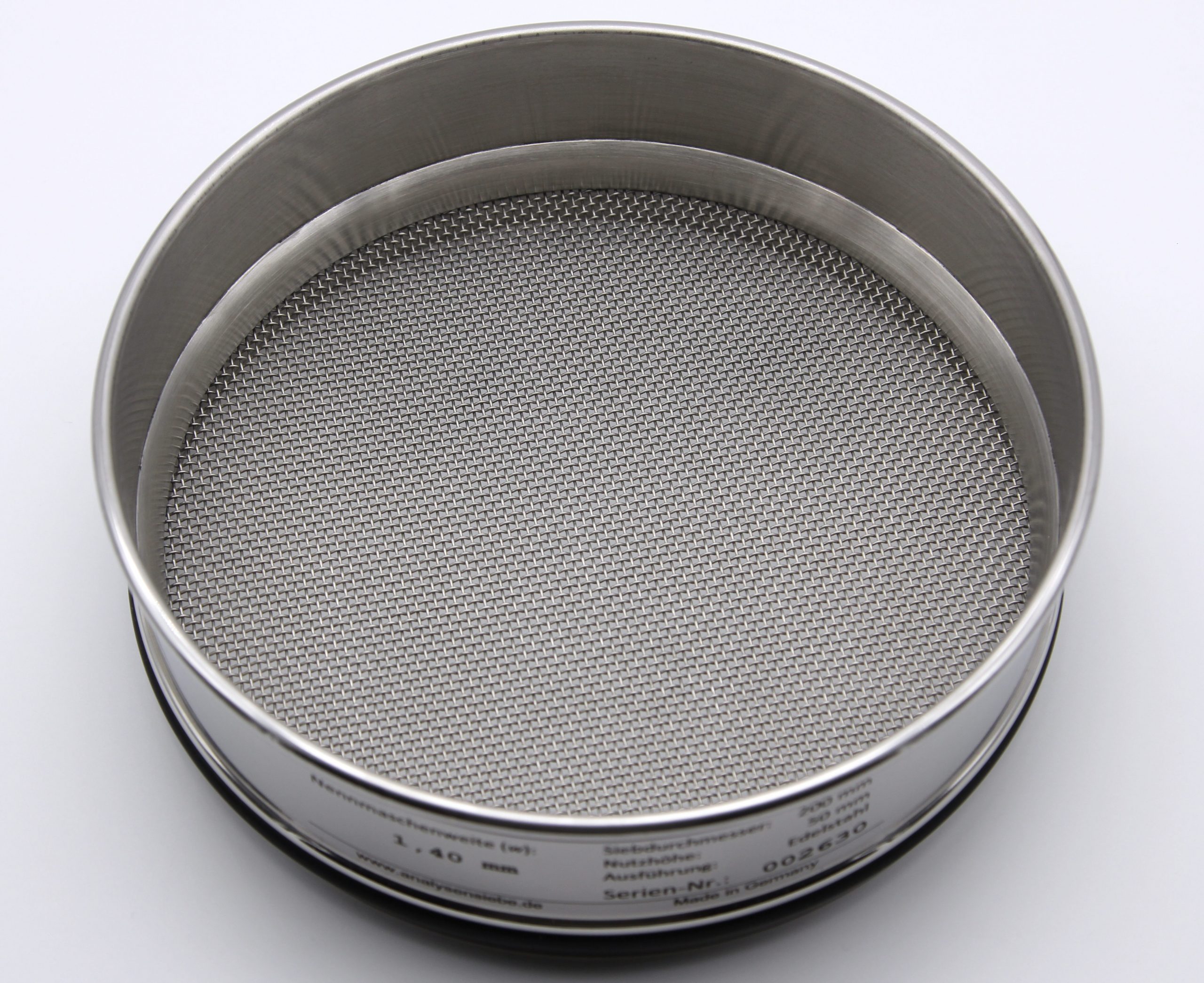
Given the price of some types of coffee, particular attention should be paid on minimizing the discarded fractions which, in turn, requires the sieves that are used to conform very closely to the desired particle sizes.
Blau-Metall sieves in accordance with ISO 3310 enable a precise and reliable analysis of the particle size distribution of coffee grinds and can therefore be used to objectively assess the grinding performance of high-end coffee grinders and carry out calibration based on the sieving results to optimize the grinding results. The use of food-safe Blau-Metall sieves for direct sieving of coffee prior to brewing allows coffee aficionados to perfect their coffee grinds to a particle size spectrum of their choosing.
 The major advantage of Blau-Metall sieves compared to coffee sieves of Chinese production lies in their precision: we guarantee that our sieves closely comply with the highest technical standards, meaning that deviations from the nominal sieve opening specified for every sieve is nominal. Compliance with strict tolerances is verified for every sieve through rigorous optical inspection to ensure a constant quality of our products. An additional advantage is the robust construction of our sieves using only stainless steel components which enables reliable sieving performance over many years of operation.
The major advantage of Blau-Metall sieves compared to coffee sieves of Chinese production lies in their precision: we guarantee that our sieves closely comply with the highest technical standards, meaning that deviations from the nominal sieve opening specified for every sieve is nominal. Compliance with strict tolerances is verified for every sieve through rigorous optical inspection to ensure a constant quality of our products. An additional advantage is the robust construction of our sieves using only stainless steel components which enables reliable sieving performance over many years of operation.
Sieving of coffee is typically complete using a four-piece set of two sieves (setting the bandwidth of desired particle sizes) combined with a suitable lid and collecting pan. The mesh sizes for the sieves depends on the type of coffee and the subsequent brewing technique which call for different particle sizes to yield optimal results. The fraction of the grind that passes through the top sieve (the larger of the two) and remains atop the lower sieve is used for brewing while the particles that are too large remain on the top sieve and the particles that are too fine are collected in the pan and can be discarded. The smaller the difference between the nominal sieve openings of the two sieves, the higher the degree of homogeneity within the resulting grind.
Coffee Sieves with Precision Mesh
Stainless Steel, Food-Grade - Diameter: 200 mm
| Coffee-Sort/Brewing Technique | Upper Sieve | Lower Sieve |
|---|---|---|
| Filter Coffee | 800 µm | 400 µm |
| Espresso | 500 µm | 250 µm |
| Cold Brew | 1.180 µm | 600 µm |
| French Press | 1.000 µm | 600 µm |
| Aero Press | 900 µm | 500 µm |
| Mocha | 710 µm | 355 µm |
| Drip | 900 µm | 400 µm |
| Syphon | 800 µm | 400 µm |
Price for Complete Set: (2 Sieves 200 x 32 mm, Sieve Lid, Collecting Pan): €227,00 (Delivery Times upon request.)
Test Sieves for the Calibration of Coffee Grinders
Stainless Steel, Food Grade - Diameter: 200 mm, Delivery Time: 10 Days
| Nominal Sieve Opening | Standard | Sieve Diameter | Sieve Depth (H1) |
|---|---|---|---|
| 1,40 mm | ISO 3310-1 | 200 mm | 32 / 50 mm |
| 1,18 mm | ISO 3310-1 | 200 mm | 32 / 50 mm |
| 1,00 mm | ISO 3310-1 | 200 mm | 32 / 50 mm |
| 710 µm | DIN ISO 3310-1 | 200 mm | 32 / 50 mm |
| 630 µm | ISO 3310-1 | 200 mm | 32 / 50 mm |
| 500 µm | ISO 3310-1 | 200 mm | 32 / 50 mm |
| 355 µm | ISO 3310-1 | 200 mm | 32 / 50 mm |
| 250 µm | ISO 3310-1 | 200 mm | 32 / 50 mm |
| 125 µm | ISO 3310-1 | 200 mm | 32 / 50 mm |
| 63 µm | ISO 3310-1 | 200 mm | 32 / 50 mm |
| Collecting Pan | 200 mm | 25 / 50 mm |
 German Website
German Website 